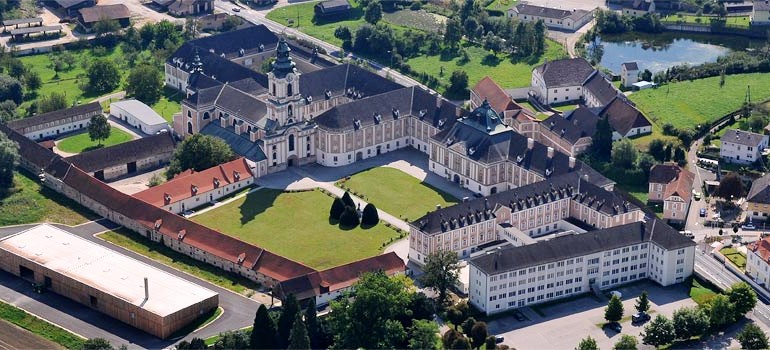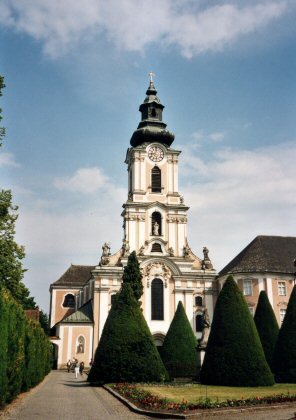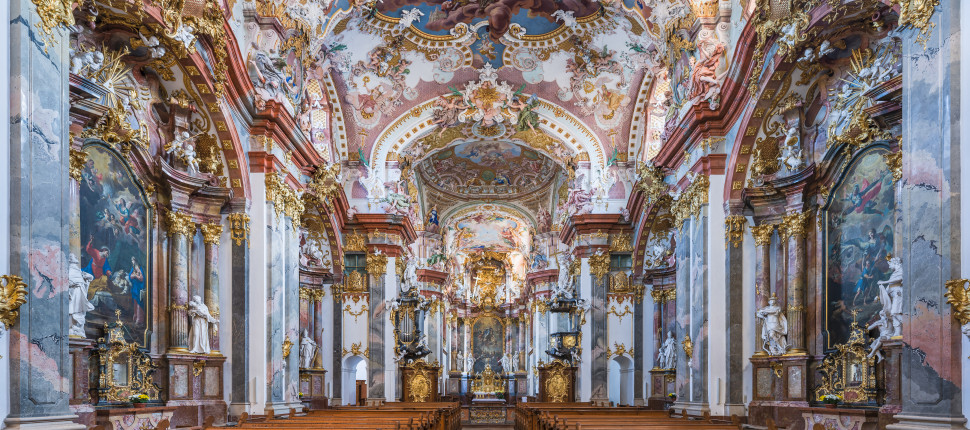Around 1145, the founding family, the "Lords of Wilhering", moved their residence to their newly built Waxenberg Castle and made the abandoned Wilhering Castle and the associated land in the Danube valley available to the Styrian Cistercian monastery of Rein for the founding of a daughter. The two young knights Ulrich and Kolo are described as the actual founders.
From the monastery Rein 12 monks and the newly appointed abbot came to Wilhering.
To be mentioned are two abbots who were active here:
- Anton Wolfradt, abbot of Wilhering 1612 - 1613
from 1631 prince bishop of Vienna, where he resided in the castle of my Viennese home village "Ober St. Veit" and did a lot for the design of Ober St. Veit. He died in 1639 and is buried in St. Stephen's Cathedral. The Wofrath Square reminds of him. - Alan Aichinger, that was the name of the abbot 1753 - 1780.

The Cistercian abbey was rebuilt after a fire in the 18th century. The Collegiate Church of the Assumption of the Virgin Mary was built using the Romanesque-Gothic church from 1733 and is a unique rococo jewel. The colourful ceiling painting was painted by Bartholomeo Altomonte, whom we already met in Engelhartszell.

Those who enter the church through the simple Romanesque portal from the Gründerzeit,

can't help but be amazed. Very much in contrast to the rigid building regulations of the Cistercian Order, one experiences in the interior of the church the exuberant splendor of the rococo with hundreds of charming angels. On a banner in the ceiling fresco is written Assumpta est Maria in caelum, gaudent angeli (Assumed is Maria in heaven, above which the angels rejoice) - and how they rejoice, the angels.


Detail of the interior of the church with some angels


Danube cycle path